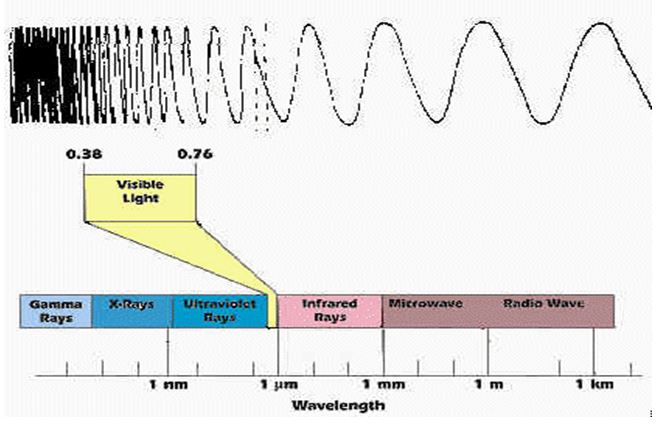Wave is a form of disturbance which travels onward due to repeated periodic motion of the medium particles. Energy is transferred during wave motion.

Types of wave
Mechanical wave:
This type of wave motion requires material medium to propagate. For example ripples on water surface, vibration of a stretched string, sound wave, shock wave generated by a supersonic jet plane, seismic wave generated during earth quake.
Electromagnetic wave:
Radiant energy like visible light, x-ray, infrared ray, micro wave etc. are simultaneous oscillations of electric and magnetic field. This type of wave can propagate without any material medium.
Transverse and longitudinal waves:
Waves are again classified into two groups according to the direction of vibration of the medium particles with respect to the direction of wave propagation. In transverse waves the particles vibrate in a direction perpendicular to the direction of wave propagation. Examples: vibration of stretched string, all electromagnetic waves;
In longitudinal waves the particles vibrate in the direction of wave propagation.

Wave parameter
Frequency (f):
The number of complete oscillations made in one second is called the frequency. The S.I. unit of frequency is Hertz (Hz).
Time period (T):
Time taken by a particle to make one complete oscillation is called the time period.
Wavelength (l):
The distance traveled by a wave during the time in which a particle makes one complete oscillation is called the wavelength.

Wave velocity (v):
The distance moved by a wave per second is called its velocity.
v = fl
Speed of light is vacuum is 3 x 108 m/s and the speed of sound wave in air is 340 m/s.
Electromagnetic Waves

Radiation | Approximate wavelength (nm) |
Gamma rays | 10-3 |
x-rays | 10-1 |
Ultraviolet | 100 |
Visible light | 500 |
Infrared | 104 |
Microwave | 106 |
Radio | 107 – 106 |
Light
Visible light is a very small fragment of the electromagnetic wave spectrum that creates sensation of vision in our eyes. The range of wavelength of the visible light is 360 nm (violet light) to 720 nm (red light). The wavelength of yellow light is about 589 nm. (1nm = 10-9 m)
Light rays and Beams Ray
A ray is the direction or the path taken by light. Ordinarily it refers to a narrow stream of light energy. In diagrams rays are represented by lines with arrows on them.
…………………………>
Light ray
Beam
A beam is a stream of light energy and may be represented by a number of light rays which may be converging or diverging.













